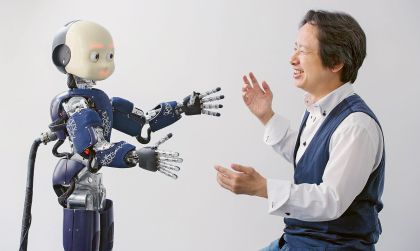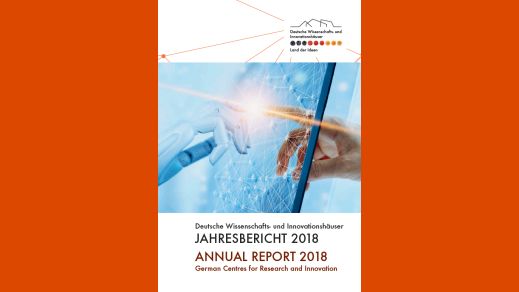How robots are making life and work easier
 © Hero Images / Getty Images
© Hero Images / Getty Images
Technology brings people together: robotics also opens up new opportunities for collaboration between different generations
In the field of robotics, Germany is focusing on a wide range of aspects in research and concrete application. According to the “World Robotics Report 2018” compiled by the International Federation of Robotics, there are 322 industrial robots for every 10,000 employees in Germany; only in South Korea and Singapore is the proportion of robots any higher. The German Research Center for Artificial Intelligence (DFKI) and the German Aerospace Center (DLR) are two globally renowned robotics research institutions. “Germany plays a central role in developing robots that work together with humans”, says Professor Oussama Khatib, head of the Robotics Lab at Stanford University in the USA.
Robotics leader Japan has long been cooperating with Germany in this field: in 2017, the DFKI and Japan’s National Institute of Advanced Industrial Science and Technology (AIST) signed a strategic partnership agreement with a view to advancing cognitive robotics, among other things – robots that learn from interacting with humans. Osaka Prefecture University awarded the DFKI’s Andreas Dengel the title of Distinguished Honorary Professor in recognition of his outstanding commitment to joint research and teaching in artificial intelligence. And the architect Professor Thomas Bock from the Technical University of Munich, who once studied industrialisation and robotics in construction in Japan, received the 2017 Eugen and Ilse Seibold Prize from the German Research Foundation (DFG) for his contributions to German-Japanese scientific exchange. In 2018, Bock discussed his concept of “robot-oriented design” during a DFG lecture series in Osaka, Tokyo and Fukuoka that was supported by the German Centre for Research and Innovation (DWIH) Tokyo.
 Bock does not envisage a future in which houses have robots moving around inside – he wants to turn the houses themselves into robots. He is designing automated buildings in which people can continue living independently to an advanced age: the walls, furniture and floor all react to the residents, monitoring their health and for example taking them to the bathroom or requesting help if a person falls. “Space travel is my role model – space stations also respond intelligently to the astronauts”, says Bock. The rooms he has designed are already being used in hospitals and care homes in Geneva, Copenhagen and Eindhoven.
Bock does not envisage a future in which houses have robots moving around inside – he wants to turn the houses themselves into robots. He is designing automated buildings in which people can continue living independently to an advanced age: the walls, furniture and floor all react to the residents, monitoring their health and for example taking them to the bathroom or requesting help if a person falls. “Space travel is my role model – space stations also respond intelligently to the astronauts”, says Bock. The rooms he has designed are already being used in hospitals and care homes in Geneva, Copenhagen and Eindhoven.
Bock’s team has also developed a home workstation that looks like a cockpit and allows older people to continue working. They can use it to communicate, but also to interact via remote-controlled robots. This benefits not only the individuals themselves: people who have retired from the active phase of their working lives can also contribute their valuable knowledge to planning and production processes via decentralised “home labs”.
Thomas Bock does not therefore regard automation as a threat – on the contrary, he warns against resisting the trend. “History has taught us that those who actively shape technological trends are the ones to profit from them”, says Bock. “Jobs are not threatened by innovations, but by ignoring them.”

